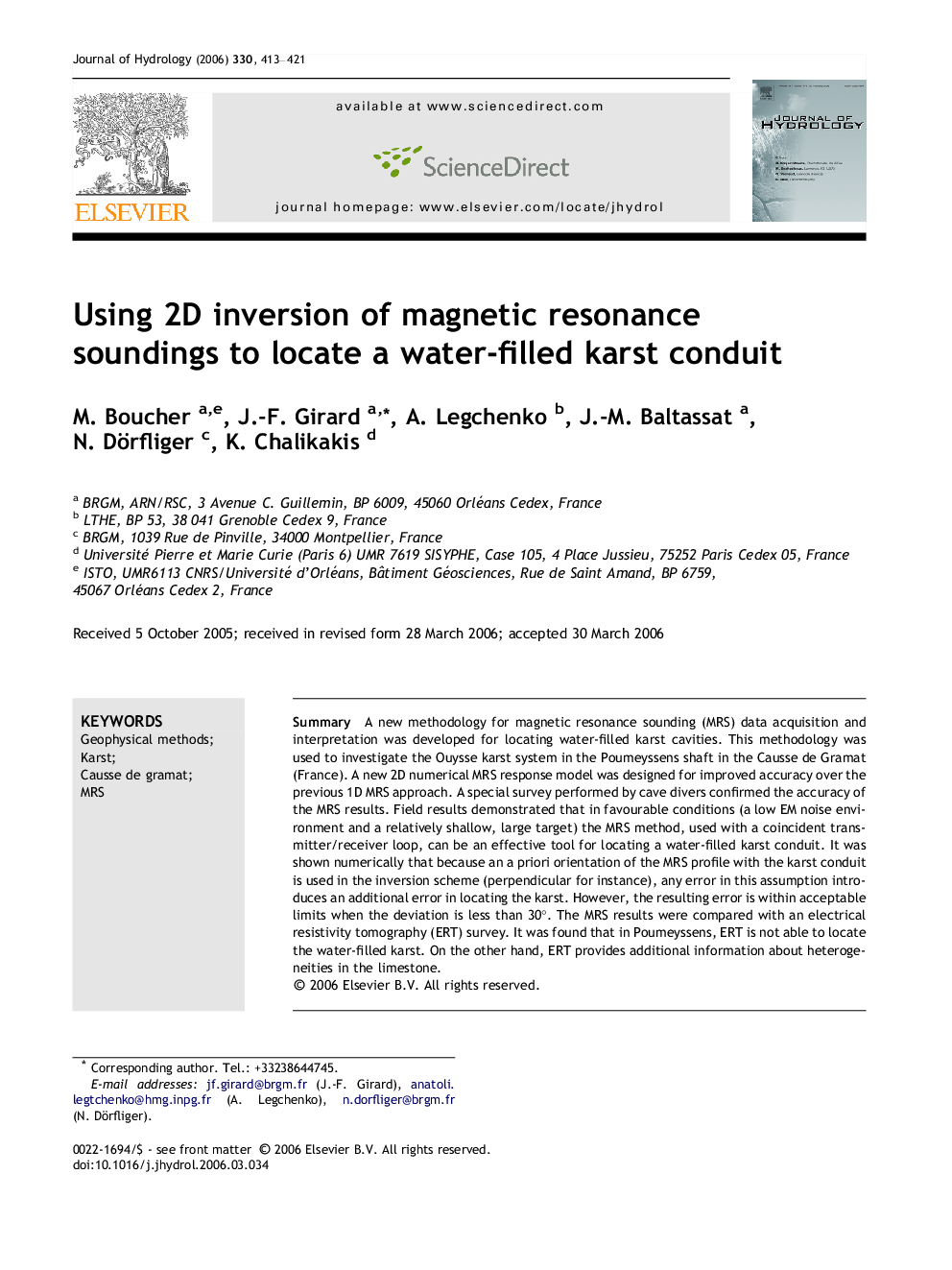| Article ID | Journal | Published Year | Pages | File Type |
|---|---|---|---|---|
| 4580414 | Journal of Hydrology | 2006 | 9 Pages |
SummaryA new methodology for magnetic resonance sounding (MRS) data acquisition and interpretation was developed for locating water-filled karst cavities. This methodology was used to investigate the Ouysse karst system in the Poumeyssens shaft in the Causse de Gramat (France). A new 2D numerical MRS response model was designed for improved accuracy over the previous 1D MRS approach. A special survey performed by cave divers confirmed the accuracy of the MRS results. Field results demonstrated that in favourable conditions (a low EM noise environment and a relatively shallow, large target) the MRS method, used with a coincident transmitter/receiver loop, can be an effective tool for locating a water-filled karst conduit. It was shown numerically that because an a priori orientation of the MRS profile with the karst conduit is used in the inversion scheme (perpendicular for instance), any error in this assumption introduces an additional error in locating the karst. However, the resulting error is within acceptable limits when the deviation is less than 30°. The MRS results were compared with an electrical resistivity tomography (ERT) survey. It was found that in Poumeyssens, ERT is not able to locate the water-filled karst. On the other hand, ERT provides additional information about heterogeneities in the limestone.
